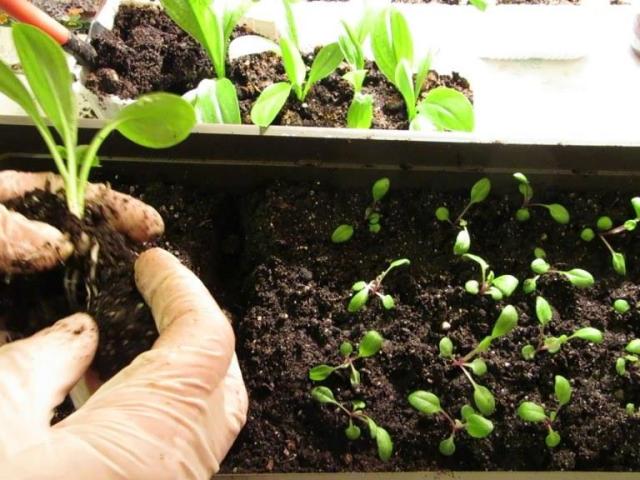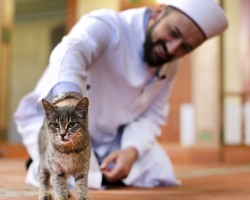The secrets of growing petunia seedlings at home.
Content
- Preparation of Petunia seeds for sowing for seedlings
- Sowing petunia seeds for seedlings: to what depths
- How often to water the seedlings of petunia at home, in open ground?
- How to process petunia seedlings from pests and diseases, if it grows poorly, yellow, leaves?
- Feeding of petunias with fertilizers
- How to feed Petunia's seedlings with folk remedies?
- What temperature does Petunia's seedlings withstand?
- Diving and hardening the seedlings of Petunia
- When and how to plant petunia seedlings in pots, open soil?
- Growing the seedlings of petunia on toilet paper without earth
- Video: Petunia, grow without errors
Petunia - This is a herbaceous plant belonging to the genus of nightshade, having very beautiful and bright flowers. The birthplace of this half -brush is Brazil, Argentina and Uruguay. In these territories, Petunia can safely bloom without a transplant for at least three years.
As for our climatic zone, annual plants feel better with us. Therefore, all those who like to decorate their personal plot with this delicate flower have to grow new seedlings every year, and then plant it in the soil.
Preparation of Petunia seeds for sowing for seedlings

Petunia belongs to those plants that need a warm climate and high humidity. Ideally, in order for the seeds of this flower to rise well they need to create greenhouse conditions. And this means that it will not be enough to just put them in the ground and drink it. Seedlings, of course, will end up, but it will take a lot of time. Therefore, it will be better if you try to conduct pre -sowing seed preparation.
It will help you accelerate the seedlings of seedlings, and as a result, you can literally admire the brightly flowering bushes of Petunia in early summer. But keep in mind that the proper preparation of seeds takes from 1 to 1.5 months, so if you want to plant the seedlings of Petunia in open ground in early May, then you need to start stratification in February.
Recommendations for the preparation of Petunia seeds for sowing:
- To begin with, you will need to find river sand of the smallest fraction. If you type it for the frozen, then bringing it home, be sure to let him warm up to room temperature (at the same time, make sure that natural moisture does not evaporate from it).
- When the sand is ready, pour it with a thin layer into a cardboard box or a plastic container. We also add petunia seeds here and mix everything thoroughly. Try to do everything carefully so that the seeds are not damaged.
- After that, we take a piece of plastic film or just a dense bag, and tightly cover the box with seeds with it. We send them in this form to the refrigerator and forget about them for 6-8 weeks.
- After this time, take a container with seeds from the refrigerator, separate them from sand and transfer them to a weak solution of potassium permanganate. In this solution, they should lie at least 6 hours and after that they will be ready for sowing.
Sowing petunia seeds for seedlings: to what depths

As mentioned above, the seedlings of Petunia very much loves moisture, so it is necessary to place it in the soil in such a way that when watering, it can absorb its largest amount. It follows from this that it is desirable to place it not very deep. The depth of 2-3 millimeters is considered optimal.
Recommendations for the sowing of petunia seeds:
- At the initial stage, you need to start preparing the soil in which you will plant seeds. Remember if you do not want the future seedlings to hurt and grow well, then lay the soil in the container disinfected by the solution of potassium permanganate. As for the soil, it is best to lay it on a well -compacted drainage layer. The soil itself also needs to be laid in a container not with a spatula, but to sift it through a sieve.
- After that, all containers with the soil must be put in pallets with water and left there for 10-12 hours. During this time, the soil will absorb moisture and you will not have to fill the top layer with water very much. When you see that the water in the pallet decreased approximately half, you can proceed directly to the sowing of the seeds.
- First, slightly loosen the top layer of the soil and put the seeds on it evenly. No need to sow them with rows, it will be better if you divide the area into squares, and then carefully fill out each of them. After the seeds are distributed, put a thin layer of soil on them (it can be sift through a sieve), and then sprinkle it with water using a spray gun.
How often to water the seedlings of petunia at home, in open ground?

- Petunia is a moisture -loving plant that can grow normally and develop only in a humid environment. Therefore, as soon as the first delicate worships appear, you must ensure that the upper soil layer is wet all the time. If you miss the moment, and it will dry out, then literally in a couple of hours the seedlings may die. In view of this, take a rule for yourself all the time while the seedlings are in containers three times a day to spray the soil with water from the spray gun.
- It is desirable to carry out such watering in several stages. First, it will only be necessary to slightly boil the soil with water and wait for it to absorb. After that, process it again, but this time moisten more abundantly. After the seedlings are planted in the ground and rooted well, it can be watered from a garden watering can, though this part will also need to be very carefully so that life -giving moisture does not damage the root system of the flower.
- In open ground, depending on weather conditions, Petunia must be watered 1 or 2 times. If air humidity is above 60%, one watering will be enough at night. If the humidity drops to 45%, then it will be necessary to water the plant in the morning (an hour before sunrise) and late in the evening, when the heat begins to decline.
How to process petunia seedlings from pests and diseases, if it grows poorly, yellow, leaves?

Petunia, like any other plant, is subject to various kinds of diseases. As a rule, seedlings begin to hurt if it is put in improperly prepared soil or when landing is incorrectly calculated the distance between the plants. In these cases, it is almost always affected by infectious or fungal diseases that manifest themselves with poor growth and yellowness.
Another enemy of the seedlings of Petunia are insects (midges, a web of tick and tripps). These pests most often settled on the leaves of the plant and help to be twisted.
Recommendations for the fight against pests and diseases of the seedlings of Petunia:
- If the plant grows poorly, then mix ash with water, let the liquid stand a little, and then pour seedlings with it. The substances contained in the ash will not give pathogenic microflora, which lives on the plant, to multiply intensively.
- With yellowness, you can also try to fight folk remedies. For these purposes, you can use mustard or garlic infusion. In order not to harm seedlings, it is added to water at the rate of 20 drops per 1 liter of water, and then with a spray gun the solution is sprayed over the plants. Yes, and remember, completely yellowed leaves, as a rule, are not subject to restoration, so it is best to remove them before you start a sanitation of seedlings.
- If you notice that the seedlings began to spin, then begin to fight this problem with cardinal methods. If you miss the right moment, then plants may even die. To combat this problem, it is best to use purchased funds. You can treat Petunia with a funnel, confidor or decis.
Feeding of petunias with fertilizers

- As a rule, the first top dressing of petunias is carried out when 2 or 3 full -fledged leaves grow on it. Before this time, the sprouted seeds are literally treated with fungicides that kill microbes and bacteria, as well as vitamin complexes that accelerate their growth. If the plant is normally responded to all these procedures, then by approximately 10-14 days you can feed, which will contribute to the proper development of the root system.
- For these purposes, you will need to dilute a small amount of any universal fertilizer in the water and pour the soil into which seedlings is planted with the resulting solution. But when preparing this top dressing, strictly adhere to the dosages indicated on the packaging, if you try to at least slightly increase the concentration of nutrient fluid, this can lead to the death of seedlings. After about a week, you can feed Petunia on the sheet. In this case, it is best to use nitrogen -containing fertilizers.
- From them, too, it will be necessary to prepare the solution and saw it with a thin layer on the leaves. After this top dressing, leave seedlings alone for about a week, and then treat its leaves with potassium fertilizer. Yes, and remember, in order not to harm the petunia, top dressing must be alternated with watering, for example, in the morning you apply fertilizer under the root, and in the evening, watering with ordinary water.
How to feed Petunia's seedlings with folk remedies?

- If we talk about the most effective top dressing for the seedlings of Petunia, then here is in the first place of ash. As already mentioned at the beginning of our article, it can effectively contribute to the intensive growth of Petunia and at the same time fighting diseases that most often affect seedlings. Therefore, if you want to get rid of all possible problems with one processing, then try to bring it to the root. Also, if desired by a solution of ash and water, you can feed the sheet.
- Another effective folk remedy is able to improve the growth of petunias seedlings is considered chicken droppings. True, in this case, you should take into account that it must be used very carefully. It is undesirable to bring chicken droppings into the soil in pure form. Therefore, it will be better if you first prepare a solution from it and with it will be completed.
- So, take about 1 kg of chicken and mix it from 10 liters of water. Put the liquid in a dark place for 7-10 days, and then strain and add it for 1 teaspoon of potassium permanganate and copper sulfate, and carefully pour the soil obtained with liquid into which seedlings are planted.
- Also, nettle and antimicrobial properties have nettles. In view of this, if you prepare a concentrated solution of dry or fresh nettles, you can use it for feeding both the root system and the leaves of the plant.
What temperature does Petunia's seedlings withstand?

- The young seedlings of Petunia are very moody. As practice shows, without plus air indicators, high humidity and sufficient amounts of light of seedlings, in general, refuses to grow. And if the lack of ultraviolet radiation and humidity can somehow transfer, then low temperature indicators in just a couple of days lead to the death of the plant.
- This is due to the fact that the root system of young petunia is very poorly developed and at low temperatures it ceases to supply the stem and leaves of seedlings with oxygen and useful substances. Therefore, while it is in a closed room, try to maintain a temperature in it at 15-20 degrees. After the seedlings are slightly stronger, the temperature indicators can be reduced to 5 degrees.
- Yes, all this applies to frost -resistant varieties that can withstand even zero temperature. Only adults, well -rooted plants that were held safely spent in open ground, for at least 3 months, calmly tolerate low indicators.
Diving and hardening the seedlings of Petunia

Some beginner gardeners consider the process of diving a waste of time, so they just wait for the plants to stretch out enough and plant them in street pots or open ground. As a result, they receive not a magnificently growing plant, but a weak and painful flower on which buds practically do not appear.
In view of this, if you want the seedlings of Petunia in the future to please you with a beautiful flowering, then be sure to propy it.
Recommendations for diving petunia seedlings:
- Messing the container into which you will transplant seedlings and fill it with a substrate or simply fertile soil.
- Take a small garden spatula or even a teaspoon and make a recess container in the center (it should not be deep, it will be literally 1.5-2 cm).
- Then pour a small amount of water into the resulting hole, and wait until it is completely absorbed. Inspect the land if it seems to you that it is not moisted enough, then repeat the manipulation.
- Next, take a knife and stick it into the ground about half a centimeter from the seedlings of seedlings. After that, begin to stretch the plant, trying not to damage its roots.
- Gently take Petunia in your hands and, together with the ground that remained on the roots, transfer it to a previously prepared recess. If required, then additionally sprinkle this place with a thin layer of the substrate.
- At the last stage, you will only need to slightly compact the soil at the root system and pour the plant with clean water (it is advisable to cut it from the spray gun).
After the seedlings take root and begins to produce young sheets, you can start hardening it. It is best to start this process with a minimum decrease in the temperature in the room in which it stands.
To begin with, lower the temperature by literally 2-3 degrees. The next day you can lower another 5-7 degrees. After the seedlings getting used to lower temperature indicators, you can take it to the open balcony for 1-2 hours.
When and how to plant petunia seedlings in pots, open soil?

As a rule, Petunia is transplanted into open ground, when the temperature night indicators stop dropping below 5 degrees, and the daily ones at the same time reach 20. If you do it a little earlier, then the plant will not have the opportunity to warm up during the day, and it will certainly begin to grow poorly. If you plan to put Petunia in flower pots placed on the balcony or loggia, then you can do this when the daily air temperature begins to rise to 15 degrees.
As for transplanting seedlings, it can be carried out in two ways. If when diving you transferred seedlings to small disposable containers, then you can easily cut them and directly transplant Petunia into the soil or pot of larger diameter. And if the seedlings will need to be dug out of the general container, then you will first need to moisturize the soil as well as possible, and then use a knife and a garden shoulder blade to get the plant from the soil and only after that transfer it to a new place of residence.
Growing the seedlings of petunia on toilet paper without earth

This method of growing seedlings will appeal to those gardeners who have no room for pots with young plants. In this case, you can simultaneously sprout up to 100 plants in a glass or simply in a cut bottle.
So:
- First, the preparation of the plastic film. It will need to be cut into tapes, the width of which will definitely coincide with the width of toilet paper.
- Then the polyethylene prepared in this way will need to be laid out in one layer on the table or floor. After this is over, it will have to be sprinkled with water and put one layer of toilet paper on it.
- The paper is also sprayed from the spray gun, and then petunia seeds are laid out on it. Try that they are located on the same line, but not very close to each other.
- At the next stage, we again take toilet paper and carefully put it on top of the seeds. At the same time, do not forget to ensure that all parts of this inedible sandwich are placed exactly parallel to each other.
- This layer of toilet paper is also sprayed with water, and then covered with another strip of polyethylene on top.
- At the final stage, all the ribbons must be twisted into a roll (it should not be very tight) and move it into a pallet of water. In order for the seeds to rise faster, place a container with a roll as close to the battery as possible.







